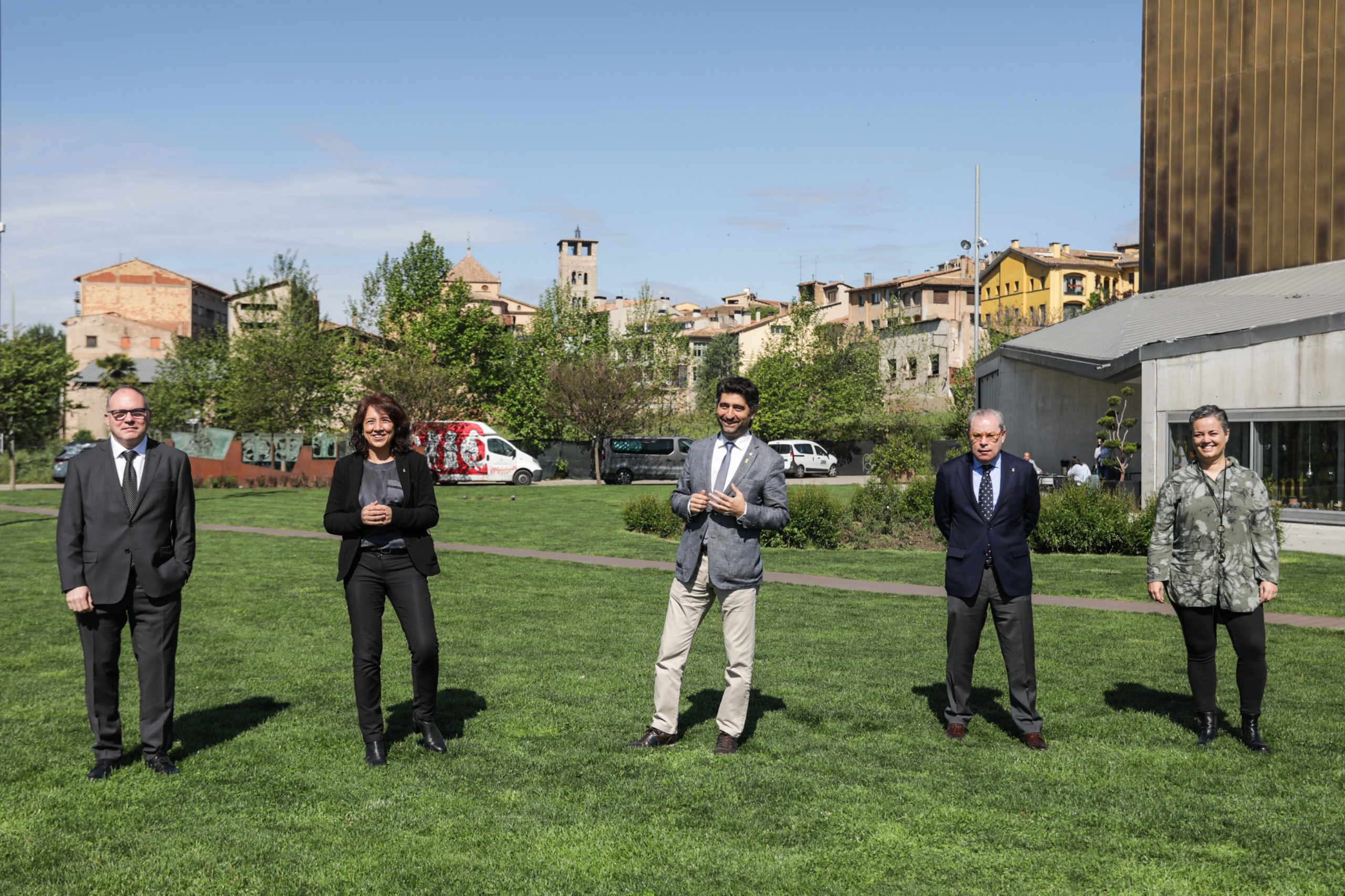
- It is a regional development project promoted by the Ministry for Digital Policy and Public Administration of the Regional Government of Catalonia in collaboration with Mobile World Capital Barcelona, i2CAT Foundation, Barcelona Provincial Council, Vic City Council and Creacció
- The Catalunya Central 5G Area will cover the regions of Osona, Moianès, Berguedà and Bages, and is based on four areas of knowledge: agrifood sector, Industry 4.0 (focusing on metalworking and mining), small municipalities and rural repopulation, and drones
- The purpose of the 5G areas is to bring together different initiatives addressed to promoting this technology by means of training and dissemination activities, workshops, concept trials and laboratories

12 May, 2021
Barcelona, 12 May 2021-. The Catalunya Central 5G Area is now a reality. A new extension to the 5G Area project was presented this morning. This project is promoted by the Regional Government of Catalonia, through the Ministry for Digital Policy and Public Administration, as part of the 5G Strategy of Catalonia. It also has the support and collaboration of Mobile World Capital Barcelona, the i2CAT Foundation, Barcelona Provincial Council, Vic City Council and Creacció.
The 5G Areas are intended to enhance the Catalan 5G ecosystem and to turn Catalonia into an international benchmark for 5G technology. They seek to improve existing technological services throughout Catalonia, to promote commercial use of the 5G network and to encourage its deployment by promoting use cases and concept trials in real environments and stimulating a digital economy beyond the cities. The aim is to boost the local economy while bringing agents into contact with the ecosystem and promoting participation. This means innovating from within the territory and for the territory.
According to the Minister for Digital Policy, Jordi Puigneró, “in the Government we are pledged to deploying digital infrastructures throughout the country, to ensuring the entire territory is connected, to promoting the development of the new digital economy and to generating equal opportunities for all the citizens of Catalonia, wherever they live”.
The Councillor for Innovation, Local Governments and Territorial Cohesion, Josep Arimany, explained that Barcelona Provincial Council’s commitment to the deployment of the Catalunya Central 5G Area comes from a desire to work “in a unified country, in which opportunities do not depend on whether you live in a small town or in a city, or on whether you live in one region or another: territorial cohesion and social cohesion go hand in hand”.
Pilot projects and raising awareness of 5G
The central point of the Catalunya Central 5G Area is in Vic. It will mainly focus on the design and performance of concept or pilot trials based on the available infrastructure, the organization of workshops on digital services and 5G in collaboration with the local ecosystem, and training initiatives together with regional agents. Geographically, this 5G Area will cover much of the former administrative area of Central Catalonia and include the regions of Osona, Moianès, Berguedà and Bages.
The project is intended to generate 5G use cases to promote sectors that drive the economy and are in line with regional priorities. One of these is the agrifood sector, which accounts for much of Central Catalonia’s GDP. The aim is to encourage higher added value initiatives that promote the sector’s sustainability. Another sector is Industry 4.0, with a focus on metalworking and mining. Companies in this sector need to strengthen their value chain at a time of extensive digital transformation, while some have very specific requirements in areas such as security. The reach of the Catalunya Central 5G Area also extends into small municipalities and rural habitability, encouraged by new models of remote organisation that affect education and work, as well as drones and the resulting challenges and applications. Channelling each project has involved the design of a network of local collaborators to maximize the impact in each sector.
Eduard Martín, CIO and Director of Mobile World Capital Barcelona’s 5G programme explained during the session that “the Catalunya Central 5G Area will use 5G technology to improve existing services, while promoting initiatives and projects that have a direct impact on social and productive ecosystems and can, ultimately, benefit people”.
Rosa Paradell, Innovation Business Development Director for the public sector of the i2CAT Foundation stated that the 5G Areas therefore represent a long-term opportunity for the zone’s economic fabric. She added that “based on public and private collaboration and cooperation, the main goal of the Catalunya Central 5G Area is to implement a strategy that is sustainable over time and capable of creating solid structures with a positive impact on the region “.
This project will join the Terres de l’Ebre, Ponent, Penedès and Camp de Tarragona 5G Areas, which were announced in recent months and seek to boost and digitize areas that include the rural, livestock, agrifood, commercial, logistics, tourism and energy sectors.
5G Area, a byword for collaboration
The Catalunya Central 5G Area is another example of the potential arising from collaboration among different regional institutions and agents.
According to Anna Erra, the mayor of Vic, the collaboration of different agents is crucial for encouraging digital empowerment, offering new opportunities for economic growth and persuading talent to stay. Erra emphasized that the arrival of 5G represents yet a further step in guaranteeing a right that should be essential –the right to connectivity– and ensuring that Vic and Central Catalonia are key places for opening the region up to the world.
The 5G Areas are expected to become both long-lasting structures throughout Catalonia with a model of public and private co-investment and also benchmarks for disseminating and providing training in the potential offered by this technology, its facilitating and integrating nature and its capacity to generate new business models.
Stay up to date about everything
Subscribe to stay up to date with the latest content from Mobile World Capital Barcelona.